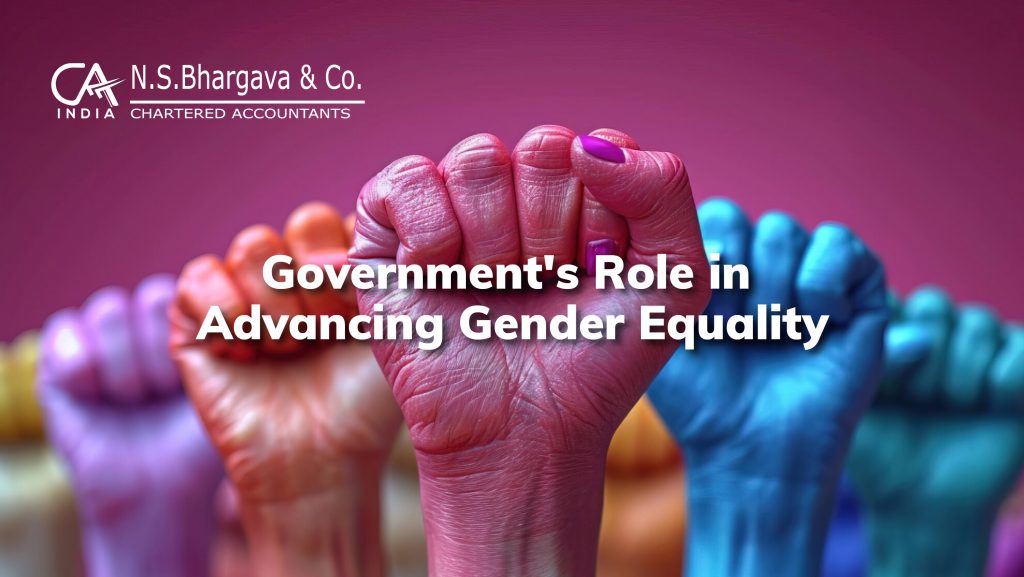
Gender equality is a fundamental aspect of the ESG framework and is essential for achieving sustainable development. Governments play a critical role in advancing gender equality through legislation, policies, and programs that address discrimination, promote women’s empowerment, and ensure equal opportunities.
Legislative Frameworks Governments enact laws to protect and promote gender equality. Key legislative measures include:
- Anti-Discrimination Laws: Enacting laws that prohibit discrimination based on gender in employment, education, and other areas.
- Equal Pay Legislation: Implementing laws to ensure equal pay for equal work, addressing the gender pay gap.
- Gender-Based Violence Laws: Enacting and enforcing laws to prevent and respond to gender-based violence, including domestic violence and sexual harassment.
Women’s Empowerment Programs Governments implement programs to empower women and promote their participation in various sectors. Key initiatives include:
- Entrepreneurship Support: Providing funding, training, and resources to support women entrepreneurs.
- Leadership Development: Offering leadership training programs to prepare women for roles in decision-making positions.
- Education and Skills Training: Ensuring equal access to education and vocational training for women and girls.
Social Protection and Welfare Governments provide social protection and welfare programs to support women, particularly those in vulnerable situations. Key initiatives include:
- Maternity and Parental Leave: Offering paid maternity and parental leave to support working parents.
- Childcare Services: Providing affordable and accessible childcare services to support working mothers.
- Social Security Benefits: Ensuring that women have access to social security benefits, including pensions and unemployment benefits.
Promoting Gender Equality in the Workplace Governments promote gender equality in the workplace through various policies and initiatives. Key measures include:
- Gender Diversity Policies: Encouraging or mandating companies to implement gender diversity policies and practices.
- Workplace Flexibility: Promoting flexible working arrangements to support work-life balance for all employees.
- Anti-Harassment Policies: Requiring companies to adopt and enforce anti-harassment policies and provide training to prevent gender-based harassment.
Public Awareness and Advocacy Governments raise public awareness and advocate for gender equality through campaigns and initiatives. Key efforts include:
- Public Awareness Campaigns: Running campaigns to challenge gender stereotypes and promote gender equality.
- Gender Equality Awards: Recognizing and rewarding organizations and individuals that demonstrate commitment to gender equality.
- Community Engagement: Engaging with communities to promote gender equality at the grassroots level.
Governments play a vital role in advancing gender equality through legislation, women’s empowerment programs, social protection, workplace policies, and public awareness campaigns. These efforts are essential for achieving a more just and equitable society.
Key Insights
- Legislative Frameworks: Governments enact anti-discrimination laws, equal pay legislation, and laws addressing gender-based violence to promote gender equality.
- Women’s Empowerment Programs: Governments support women’s entrepreneurship, leadership development, and equal access to education and skills training.
- Social Protection and Welfare: Governments provide maternity leave, childcare services, and social security benefits to support women in vulnerable situations.
- Promoting Gender Equality in the Workplace: Governments encourage gender diversity policies, workplace flexibility, and anti-harassment measures to foster an inclusive work environment.
Way Forward
- Enhance Legislative Protections: Strengthen enforcement of anti-discrimination and equal pay laws to ensure fair treatment and opportunities for all genders.
- Expand Women’s Empowerment Initiatives: Increase funding and resources for women’s entrepreneurship, leadership training, and educational programs.
- Improve Social Welfare Support: Enhance access to affordable childcare, parental leave, and social security benefits to support working mothers and caregivers.
- Promote Gender Equality in Corporate Settings: Require businesses to implement gender diversity policies, provide flexible work arrangements, and enforce anti-harassment policies.
- Raise Public Awareness: Launch campaigns challenging gender stereotypes, recognizing gender equality champions, and engaging communities in promoting gender equality.
- Advocate for Policy Reform: Advocate for policies that address systemic barriers to gender equality, including cultural norms and institutional biases.
- Monitor Progress: Establish benchmarks and reporting mechanisms to track advancements in gender equality and hold stakeholders accountable.